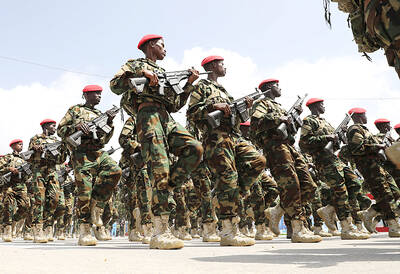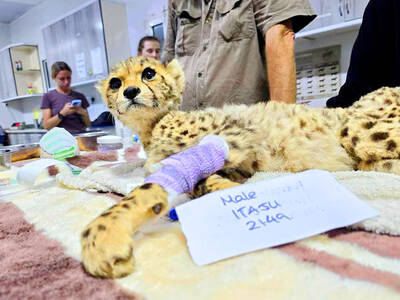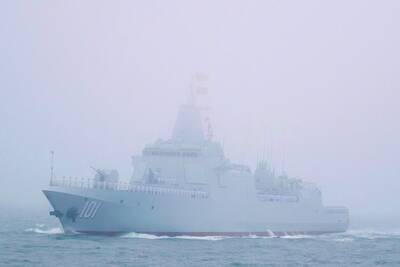For centuries, at least as far back as Leo Tolstoy's youth, hostage-takings and kidnappings have been a feared part of life in Chechnya and other parts of Russia's disorderly North Caucasus region.
But over the past decade, the actions have grown in size and severity and psychological shock -- with the seizure of a school full of children crossing a disturbing new threshold.
Although the identity of the heavily armed and explosives-laden raiders who took hundreds of hostages Wednesday in North Ossetia hasn't been established, suspicion fell on rebels from neighboring Chechnya or other insurgents taking a cue from that republic's chaos and violence.
Chechens' penchant for hostage-taking is described vividly in Tolstoy's story ``A Caucasus Hostage,'' based on his army service in Chechnya, about two Russian soldiers seized in the 1850s and held for ransom in a warlord's deep pit. Placing captives in holes in the ground is a practice that continues in the 21st century -- Russian soldiers in Chechnya use it also.
Abducting people for slave labor also persists, as Vladimir Yepishin found out in 1989 when he met two North Caucasus men in the western Russian city of Yaroslavl while intoxicated and agreed to go with them to Chechnya. He was beaten, sold from family to family four times, forced to work as a shepherd and released only 13 years after a journalist ventured into his remote mountain village and learned of his plight.
Since the first of two post-Soviet wars broke out in Chechnya in 1994, however, regional raiders have shown an increasing willingness to move from small seizures with monetary roots to large, brazen actions with political or tactical demands and to target some of society's most vulnerable sectors.
In 1995, Chechen rebels took some 2,000 hostages at a hospital near Chechnya, demanding that Russia end the war. About 100 people were killed in the raid and dozens more died when Russian troops unsuccessfully stormed the hospital. The next year, a Chechen rebel band seized up to 3,000 hostages in a raid on another hospital in the neighboring region of Dagestan. At least 40 people were killed in the raid.
After Russian forces pulled out of Chechnya in late 1996, large seizures halted, but de-facto independent Chechnya plunged into lawlessness and became notorious for brutal ransom kidnappings that sometimes ended with videotaped beheadings or mutilations.
The hostage takers in the school crisis of Beslan raised the shock value even further by seizing a group that is about half children. The raiders have made no public statement on why they chose the young and small as targets.
But mindful of the use of gas in the theater crisis, the school captors may have calculated that Russian forces would hold off this time because gas strong enough to disable an adult could kill a child.

ELECTION DISTRACTION? When attention shifted away from the fight against the militants to politics, losses and setbacks in the battlefield increased, an analyst said Recent clashes in Somalia’s semi-autonomous Jubaland region are alarming experts, exposing cracks in the country’s federal system and creating an opening for militant group al-Shabaab to gain ground. Following years of conflict, Somalia is a loose federation of five semi-autonomous member states — Puntland, Jubaland, Galmudug, Hirshabelle and South West — that maintain often fractious relations with the central government in the capital, Mogadishu. However, ahead of elections next year, Somalia has sought to assert control over its member states, which security analysts said has created gaps for al-Shabaab infiltration. Last week, two Somalian soldiers were killed in clashes between pro-government forces and

Ten cheetah cubs held in captivity since birth and destined for international wildlife trade markets have been rescued in Somaliland, a breakaway region of Somalia. They were all in stable condition despite all of them having been undernourished and limping due to being tied in captivity for months, said Laurie Marker, founder of the Cheetah Conservation Fund, which is caring for the cubs. One eight-month-old cub was unable to walk after been tied up for six months, while a five-month-old was “very malnourished [a bag of bones], with sores all over her body and full of botfly maggots which are under the

BRUSHED OFF: An ambassador to Australia previously said that Beijing does not see a reason to apologize for its naval exercises and military maneuvers in international areas China set off alarm bells in New Zealand when it dispatched powerful warships on unprecedented missions in the South Pacific without explanation, military documents showed. Beijing has spent years expanding its reach in the southern Pacific Ocean, courting island nations with new hospitals, freshly paved roads and generous offers of climate aid. However, these diplomatic efforts have increasingly been accompanied by more overt displays of military power. Three Chinese warships sailed the Tasman Sea between Australia and New Zealand in February, the first time such a task group had been sighted in those waters. “We have never seen vessels with this capability

‘NO INTEGRITY’: The chief judge expressed concern over how the sentence would be perceived given that military detention is believed to be easier than civilian prison A military court yesterday sentenced a New Zealand soldier to two years’ detention for attempting to spy for a foreign power. The soldier, whose name has been suppressed, admitted to attempted espionage, accessing a computer system for a dishonest purpose and knowingly possessing an objectionable publication. He was ordered into military detention at Burnham Military Camp near Christchurch and would be dismissed from the New Zealand Defence Force at the end of his sentence. His admission and its acceptance by the court marked the first spying conviction in New Zealand’s history. The soldier would be paid at half his previous rate until his dismissal